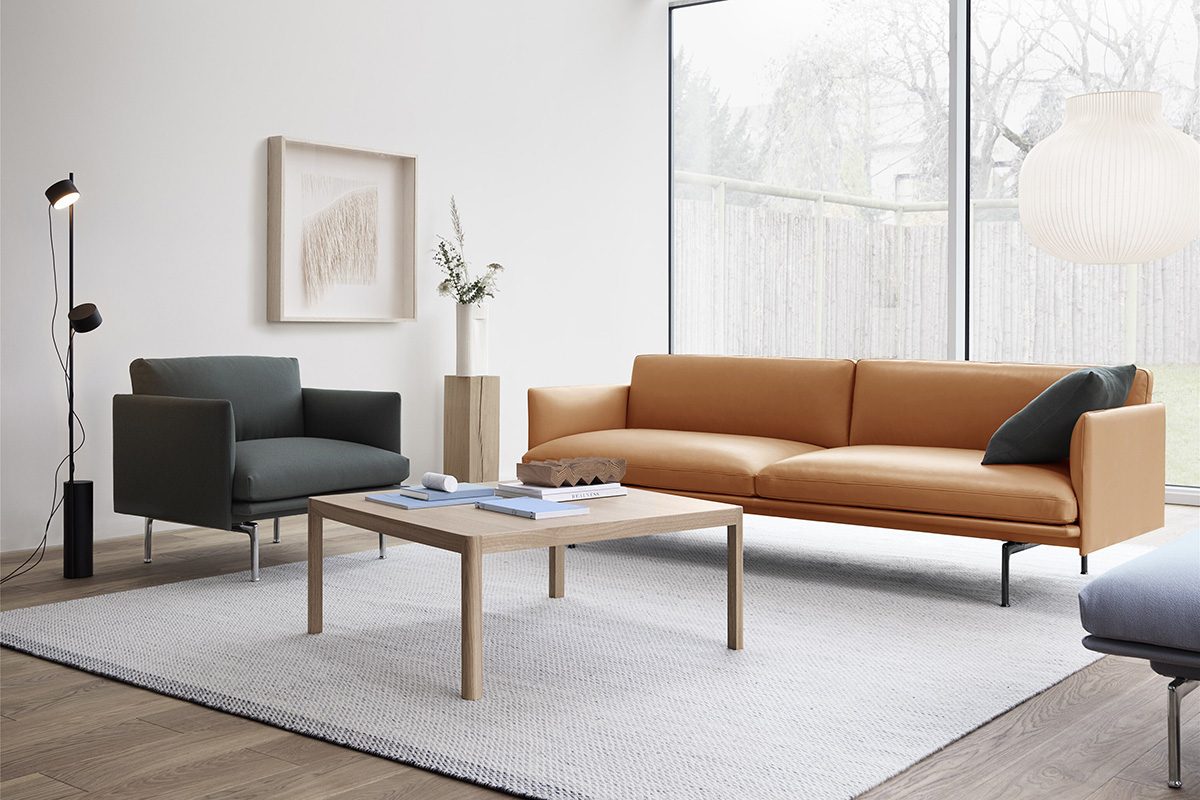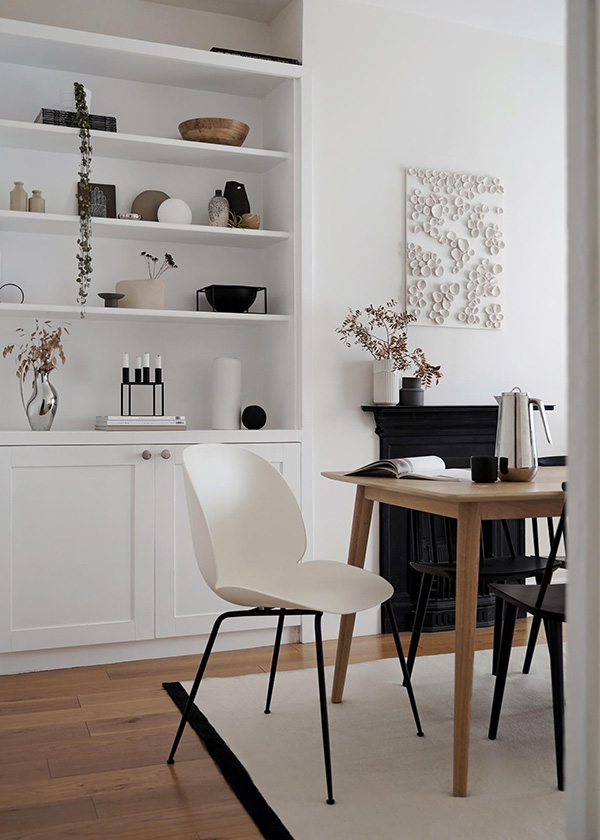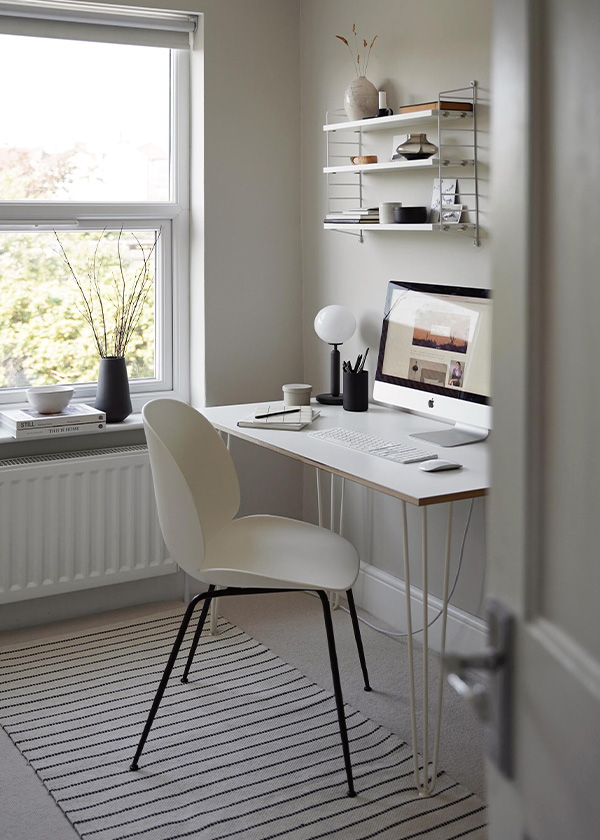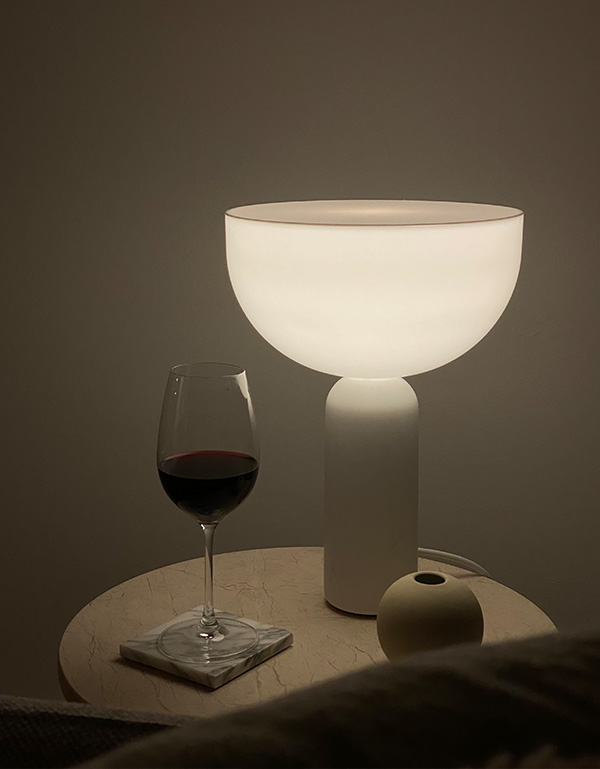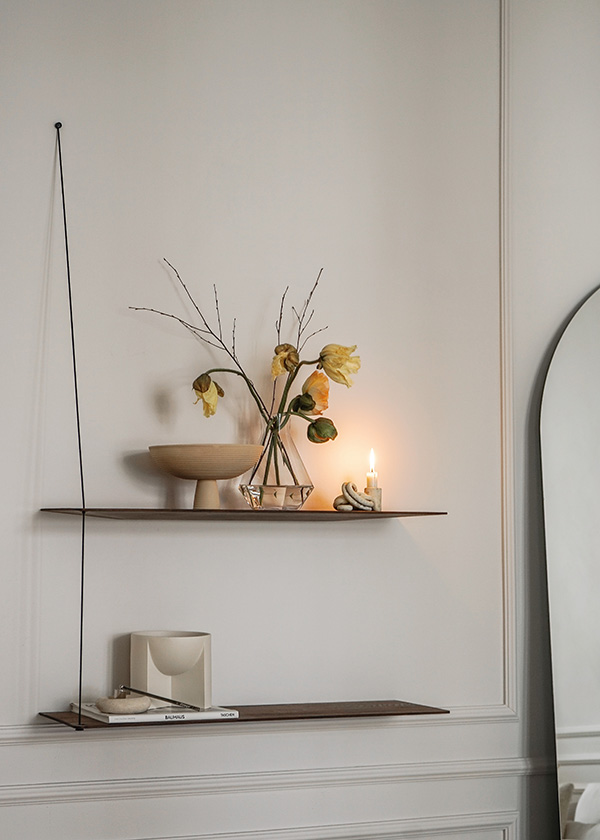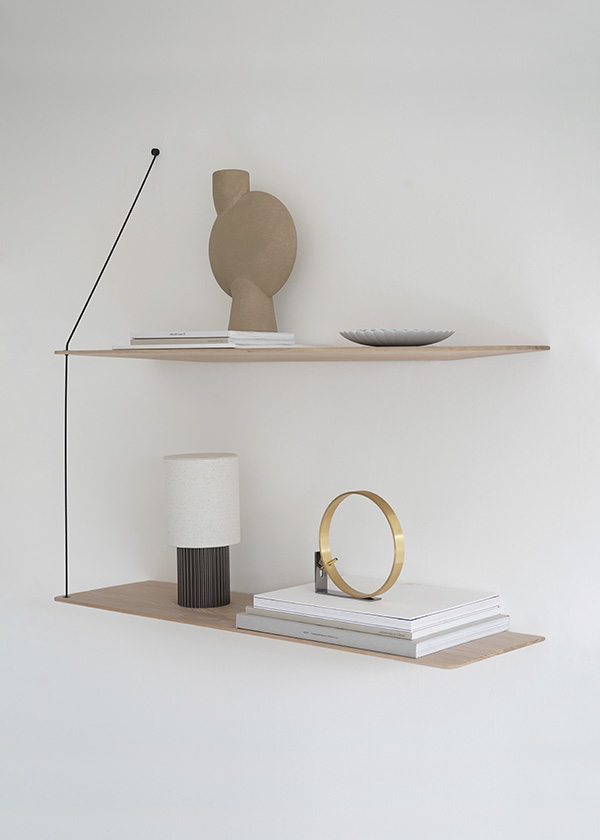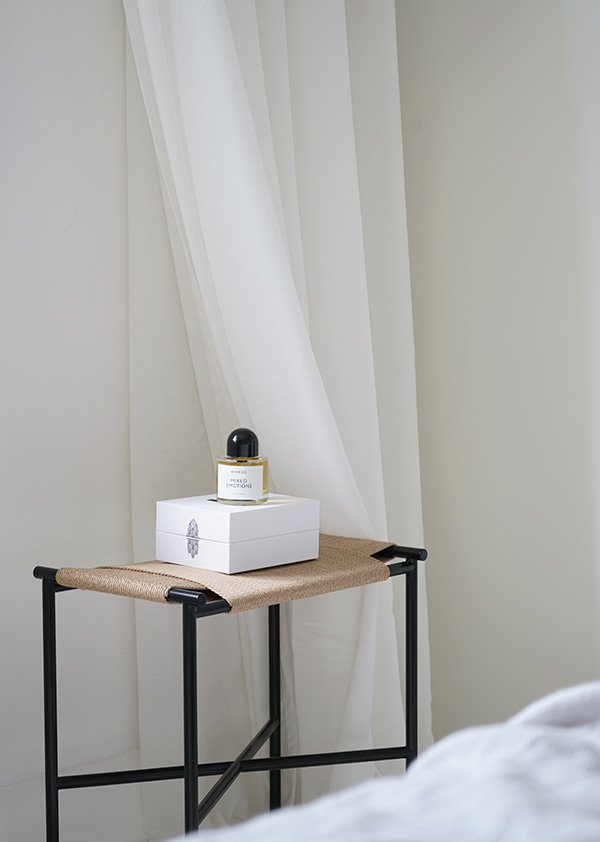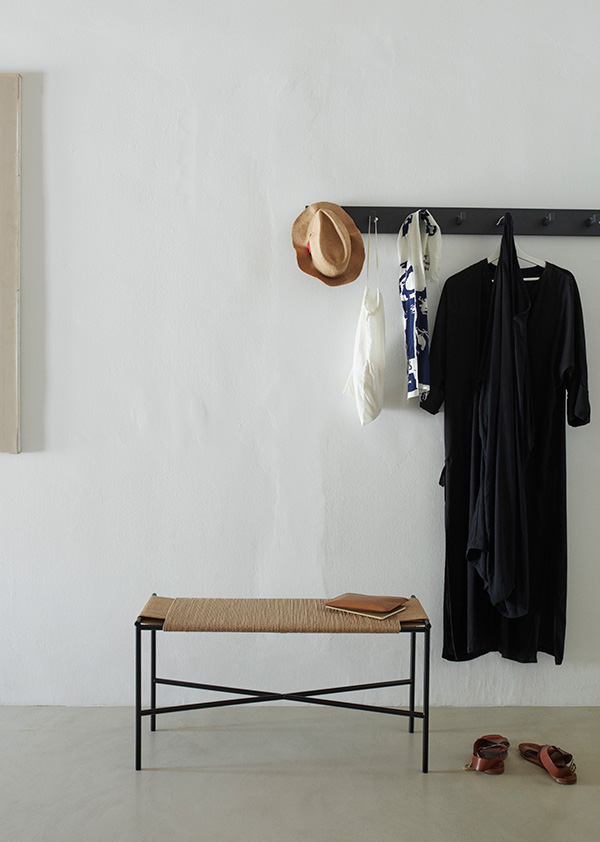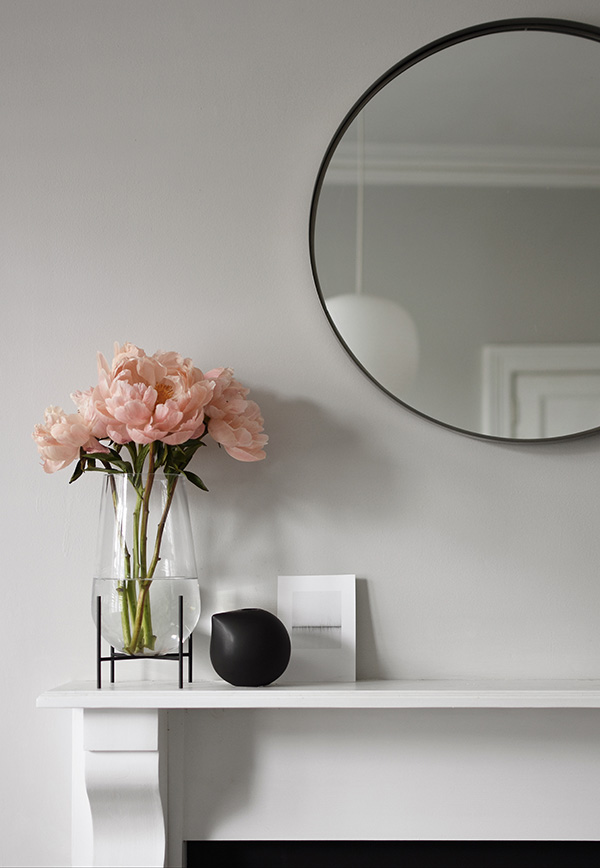The design classics of the future
We firmly believe that it’s better to buy once and buy well than to buy poor quality design replicas. But how can you tell if a design will stand the test of time?
Last year we teamed up with Abi Dare, the writer and photographer behind design blog, These Four Walls to discover why it’s always worth investing in authentic design. Today, we extend the topic further by discussing the design classics of the future – take a look at what Abi has to say…
“I’ve never been one to follow fleeting trends, and I’d much rather save up to buy good-quality pieces that will stand the test of time. Even when purchasing a design that’s only just been launched, I always ask myself if it’s something I can see myself loving for years to come, or whether it’s likely to quickly look dated – or even worse, soon fall apart!
So, how do you spot a future icon – a design that you can invest in now, knowing it will look just as good in a few decades’ time and perhaps even improve with age? Here are a few things to look out for:
- Distinctive shapes or eye-catching details.
- Designs that transcend changing tastes and aren’t heavily tied to a particular fashion.
- A balance between form and function.
- Designs that become part of a wider series – a sure sign that their popularity has been proven.
- Versatility – pieces that will work in different settings and different styles of interior.
- Designs that have already started spawning copies.
To illustrate the above, I’ve picked out 10 examples from Nest’s extensive (and always authentic!) range of furniture, lighting, and home accessories. All were created within the last few years, but in my view they’re already well on their way to becoming design classics…
Petite Friture’s Vertigo pendant lamp
French designer Constance Guisset’s Vertigo is that rarest of things: a statement chandelier that creates a dramatic focal point without overwhelming whatever space it’s in.
Made from ultra-light fibreglass and strung with polyurethane ribbons, it offsets undulating curves with straight lines and sways gently in the air, casting striking shadows around the surrounding surfaces. Guisset came up with the initial concept as a student, but it took some years to find a brand willing to put it into production. Petite Friture, however, saw its potential straight away and it was officially launched in 2010, going on to pick up several design awards.
It’s since been joined by the Vertigo Nova, which was inspired by the Nova star and features a soft LED light source encased in a sphere of handblown glass. Both come in various colours and sizes and work brilliantly in rooms of all styles.
Gubi’s Beetle chair
It may come as a surprise to learn that the already-iconic Beetle chair is less than 10 years old. Designed by Danish-Italian studio GamFratesi in 2013, it now graces hotels, restaurants and homes the world over.
The curved shell takes its cue from (you’ve guessed it) the humble beetle – a creature that has adapted to different environments over millions of years – and, just like a beetle, it’s ergonomic yet incredibly beautiful.
But what makes this chair particularly special is just how easy it is to customise. The fully and partially upholstered versions come in numerous fabrics and base colours, and there’s also a much more affordable moulded plastic option. The latter looks stunning in its own right (and has the added advantage of being wipe-clean), but you can add upholstery further down the line if you choose – meaning this really is a chair that can evolve with you as your life, tastes and home change.
The New Works Kizu table lamp
Another design that showcases the everlasting appeal of marble is the Kizu table lamp, created by Lars Tornoe for New Works. Here, though, it’s paired with acrylic in an elegant yet eye-catching fusion of contrasting materials and shapes. The semi-spherical diffuser looks as if it’s balancing on top of the rounded base, with the briefest of ‘kissing points’ between the two forms.
The overall effect is highly sculptural, with a weightless-looking grace that belies its functionality and solid construction. It was one of the launch pieces that first propelled the Danish design house to international acclaim back in 2015, and its popularity is only going to grow.
Audo Copenhagen’s Plinth table series
Marble is one of the most beautiful and enduring materials there is, and Audo Copenhagen’s Plinth family was designed specifically to highlight its qualities. The work of Copenhagen studio Norm Architects, it comes in white, black or rose, with sleek lines that emphasise the natural veins and variations of the stone.
There are cubic, tall, low and shelf versions and all are as versatile as they are timeless, serving as sculptural pieces in their own right as well as highlighting whatever objects are placed on them. What’s more, they can be used in numerous different ways, from coffee table to nightstand to display podium.
Woud’s Stedge shelf
Also seemingly defying gravity is Woud’s Stedge wall shelf. It was conceived in 2015 by talented young German designer Leonard Aldenhoff, who sought to create a pared-back, lightweight ‘stage’ that could display treasured objects without taking up any floor space.
The white-pigmented or smoked-oak shelves look as if they’re suspended from a single metal thread, but in actual fact the wood is slightly thicker at certain points to accommodate hidden wall screws. It’s a very clever optical illusion and one that gives this minimalist design sure-fire ‘future classic’ status. And, like all the most enduring shelving systems, ‘Stedge’ can be extended with add-ons to suit changing needs.
The Flos IC collection
London-based Michael Anastassiades came up with the idea for the IC lamp when watching a film of juggler Tony Duncan rolling spheres up and down his arms – and making them look so still that it wasn’t immediately apparent they were actually spinning. Anastassiades re-interpreted that moment of stillness within motion by balancing a glass diffuser on a slender metal rod, and an entire lighting series was born.
Its lasting appeal is not only due to its simple yet striking aesthetic, but also its versatility. The collection now encompasses suspension lights, floor lamps, wall lamps and table lamps, with a variety of metals to choose from, and fits seamlessly into all sorts of different spaces.
Skagerak Collection Vent stool and bench
Made popular by the likes of Hans J. Wegner and Børge Mogensen, paper cord features in some of the most iconic Scandinavian furniture from the 1940s and 50s. Danish-Swedish designer Christina Liljenberg Halstrøm was keen to showcase it in a new way, wrapping it around a black steel frame to form the Vent stool and bench.
The result is a graceful union of two classic materials, both widely used but given a surprising twist when paired together. What’s more, the seats – hand-woven at Blindes Arbejde, a sheltered workshop for people who are blind or partially sighted – are durable and incredibly comfortable and will acquire a lovely patina over time.
Muuto’s Outline sofa
Created by Norwegian design duo Anderssen & Voll, Muuto’s Outline sofa takes its cue from Scandinavian sofas of the 1960s, marrying clean, contemporary lines with timeless elegance. It’s a balance that gives it enduring aesthetic appeal, while the deep seat, soft cushioning and gently curved armrests mean it also offers lasting comfort.
There are two-seater, three-seater, corner and chaise-longue options, as well as a matching footstool, chair and daybed – and, for smaller spaces, slimmed-down ‘Studio’ versions with more compact proportions. The slender legs, which are tucked beneath the base to make it look as if the seat is hovering in the air above them, add a distinctive finishing touch.
Audo Copenhagen’s Echasse Vase
The work of Copenhagen-based architect and furniture designer Theresa Rand, the Echasse vase was inspired by laboratory test tubes. Its drop-like shape and slender, stilted base (échasse is French for ‘stilt’) are instantly recognisable, yet they also have a timeless elegance that isn’t tied to a particular style or era. The original smoked-glass and brushed-brass version became an instant hit when it was unveiled in 2017, and it’s since been joined by clear- and amber-glass options with bronzed-brass legs, along with matching bowls and hurricane lanterns.
As well as recent launches, it’s also worth looking out for pieces that were designed decades ago but are only just beginning to get the attention they deserve. The Little Petra lounge chair is one such example. One of only a few furniture items created by Danish architect Viggo Boesen, it originally dates from 1938 yet remained something of a forgotten gem until &Tradition put it into full production in 2018. Its fluffy upholstery, soft curves and playful expression mean it’s now belatedly taking up its rightful place among other Scandinavian classics.”
How about you? What future icons would you add to this list, and what makes a design stand out for you? Let us know your thoughts on Instagram @nest_co_uk.
Image credits: 2 & 3 – @thesefourwallsblog, 6 & 8 – @halimason, 7 - @tthese_beautiful_thingss, 10 - @halimason, 13 & 14 - @thesefourwallsblog
The design classics of the future
We firmly believe that it’s better to buy once and buy well than to buy poor quality design replicas. But how can you tell if a design will stand the test of time?
Last year we teamed up with Abi Dare, the writer and photographer behind design blog, These Four Walls to discover why it’s always worth investing in authentic design. Today, we extend the topic further by discussing the design classics of the future – take a look at what Abi has to say…
“I’ve never been one to follow fleeting trends, and I’d much rather save up to buy good-quality pieces that will stand the test of time. Even when purchasing a design that’s only just been launched, I always ask myself if it’s something I can see myself loving for years to come, or whether it’s likely to quickly look dated – or even worse, soon fall apart!
So, how do you spot a future icon – a design that you can invest in now, knowing it will look just as good in a few decades’ time and perhaps even improve with age? Here are a few things to look out for:
- Distinctive shapes or eye-catching details.
- Designs that transcend changing tastes and aren’t heavily tied to a particular fashion.
- A balance between form and function.
- Designs that become part of a wider series – a sure sign that their popularity has been proven.
- Versatility – pieces that will work in different settings and different styles of interior.
- Designs that have already started spawning copies.
To illustrate the above, I’ve picked out 10 examples from Nest’s extensive (and always authentic!) range of furniture, lighting, and home accessories. All were created within the last few years, but in my view they’re already well on their way to becoming design classics…
Petite Friture’s Vertigo pendant lamp
French designer Constance Guisset’s Vertigo is that rarest of things: a statement chandelier that creates a dramatic focal point without overwhelming whatever space it’s in.
Made from ultra-light fibreglass and strung with polyurethane ribbons, it offsets undulating curves with straight lines and sways gently in the air, casting striking shadows around the surrounding surfaces. Guisset came up with the initial concept as a student, but it took some years to find a brand willing to put it into production. Petite Friture, however, saw its potential straight away and it was officially launched in 2010, going on to pick up several design awards.
It’s since been joined by the Vertigo Nova, which was inspired by the Nova star and features a soft LED light source encased in a sphere of handblown glass. Both come in various colours and sizes and work brilliantly in rooms of all styles.
Gubi’s Beetle chair
It may come as a surprise to learn that the already-iconic Beetle chair is less than 10 years old. Designed by Danish-Italian studio GamFratesi in 2013, it now graces hotels, restaurants and homes the world over.
The curved shell takes its cue from (you’ve guessed it) the humble beetle – a creature that has adapted to different environments over millions of years – and, just like a beetle, it’s ergonomic yet incredibly beautiful.
But what makes this chair particularly special is just how easy it is to customise. The fully and partially upholstered versions come in numerous fabrics and base colours, and there’s also a much more affordable moulded plastic option. The latter looks stunning in its own right (and has the added advantage of being wipe-clean), but you can add upholstery further down the line if you choose – meaning this really is a chair that can evolve with you as your life, tastes and home change.
The New Works Kizu table lamp
Another design that showcases the everlasting appeal of marble is the Kizu table lamp, created by Lars Tornoe for New Works. Here, though, it’s paired with acrylic in an elegant yet eye-catching fusion of contrasting materials and shapes. The semi-spherical diffuser looks as if it’s balancing on top of the rounded base, with the briefest of ‘kissing points’ between the two forms.
The overall effect is highly sculptural, with a weightless-looking grace that belies its functionality and solid construction. It was one of the launch pieces that first propelled the Danish design house to international acclaim back in 2015, and its popularity is only going to grow.
Audo Copenhagen’s Plinth table series
Marble is one of the most beautiful and enduring materials there is, and Audo Copenhagen’s Plinth family was designed specifically to highlight its qualities. The work of Copenhagen studio Norm Architects, it comes in white, black or rose, with sleek lines that emphasise the natural veins and variations of the stone.
There are cubic, tall, low and shelf versions and all are as versatile as they are timeless, serving as sculptural pieces in their own right as well as highlighting whatever objects are placed on them. What’s more, they can be used in numerous different ways, from coffee table to nightstand to display podium.
Woud’s Stedge shelf
Also seemingly defying gravity is Woud’s Stedge wall shelf. It was conceived in 2015 by talented young German designer Leonard Aldenhoff, who sought to create a pared-back, lightweight ‘stage’ that could display treasured objects without taking up any floor space.
The white-pigmented or smoked-oak shelves look as if they’re suspended from a single metal thread, but in actual fact the wood is slightly thicker at certain points to accommodate hidden wall screws. It’s a very clever optical illusion and one that gives this minimalist design sure-fire ‘future classic’ status. And, like all the most enduring shelving systems, ‘Stedge’ can be extended with add-ons to suit changing needs.
The Flos IC collection
London-based Michael Anastassiades came up with the idea for the IC lamp when watching a film of juggler Tony Duncan rolling spheres up and down his arms – and making them look so still that it wasn’t immediately apparent they were actually spinning. Anastassiades re-interpreted that moment of stillness within motion by balancing a glass diffuser on a slender metal rod, and an entire lighting series was born.
Its lasting appeal is not only due to its simple yet striking aesthetic, but also its versatility. The collection now encompasses suspension lights, floor lamps, wall lamps and table lamps, with a variety of metals to choose from, and fits seamlessly into all sorts of different spaces.
Skagerak Collection Vent stool and bench
Made popular by the likes of Hans J. Wegner and Børge Mogensen, paper cord features in some of the most iconic Scandinavian furniture from the 1940s and 50s. Danish-Swedish designer Christina Liljenberg Halstrøm was keen to showcase it in a new way, wrapping it around a black steel frame to form the Vent stool and bench.
The result is a graceful union of two classic materials, both widely used but given a surprising twist when paired together. What’s more, the seats – hand-woven at Blindes Arbejde, a sheltered workshop for people who are blind or partially sighted – are durable and incredibly comfortable and will acquire a lovely patina over time.
Muuto’s Outline sofa
Created by Norwegian design duo Anderssen & Voll, Muuto’s Outline sofa takes its cue from Scandinavian sofas of the 1960s, marrying clean, contemporary lines with timeless elegance. It’s a balance that gives it enduring aesthetic appeal, while the deep seat, soft cushioning and gently curved armrests mean it also offers lasting comfort.
There are two-seater, three-seater, corner and chaise-longue options, as well as a matching footstool, chair and daybed – and, for smaller spaces, slimmed-down ‘Studio’ versions with more compact proportions. The slender legs, which are tucked beneath the base to make it look as if the seat is hovering in the air above them, add a distinctive finishing touch.
Audo Copenhagen’s Echasse Vase
The work of Copenhagen-based architect and furniture designer Theresa Rand, the Echasse vase was inspired by laboratory test tubes. Its drop-like shape and slender, stilted base (échasse is French for ‘stilt’) are instantly recognisable, yet they also have a timeless elegance that isn’t tied to a particular style or era. The original smoked-glass and brushed-brass version became an instant hit when it was unveiled in 2017, and it’s since been joined by clear- and amber-glass options with bronzed-brass legs, along with matching bowls and hurricane lanterns.
As well as recent launches, it’s also worth looking out for pieces that were designed decades ago but are only just beginning to get the attention they deserve. The Little Petra lounge chair is one such example. One of only a few furniture items created by Danish architect Viggo Boesen, it originally dates from 1938 yet remained something of a forgotten gem until &Tradition put it into full production in 2018. Its fluffy upholstery, soft curves and playful expression mean it’s now belatedly taking up its rightful place among other Scandinavian classics.”
How about you? What future icons would you add to this list, and what makes a design stand out for you? Let us know your thoughts on Instagram @nest_co_uk.
Image credits: 2 & 3 – @thesefourwallsblog, 6 & 8 – @halimason, 7 - @tthese_beautiful_thingss, 10 - @halimason, 13 & 14 - @thesefourwallsblog


